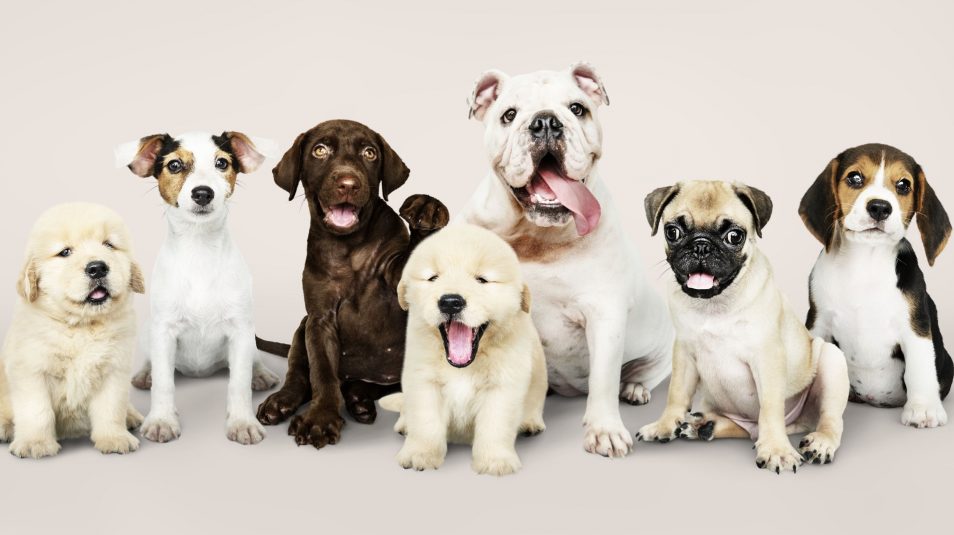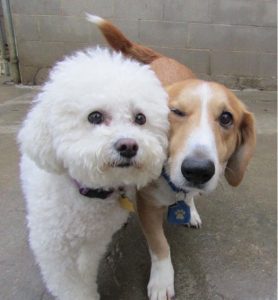Introducing Newbies Isn't Always Easy

Team Dynamics
April 23, 2019
Danise DiStasi
Topics
employee development, leading teams, Louie, New Employee Assimilation, new employees, team dynamicsLouie, my adopted pup since 2013, has experienced a lot of loss over the last year. We wrote about two of those losses, Ellie and Mick, in previous blogs. Our neighborhood grieved over the loss of these beloved companions. Though it took some time, Mick’s and Ellie’s families welcomed new puppies into their homes.
We’ve also noticed many other families in the neighborhood with new puppies as we take our daily walks. You’d think this would be a good thing for a rambunctious dog like Louie who loves to play and socializes quite a bit—but not so. In fact, he becomes really aggravated around these little dogs.
Enthusiastic Beginners
The puppies are cute and they have a tremendous amount of energy. For some reason, they love to get in his face. They paw at him, they pull on him, and they are just too much for him to handle. He sneers and may offer a quick growl, but it doesn’t seem to deter the puppies. They just keep going! They have no fear, which aggravates him all the more. He has learned to walk away when they get on his last nerve.
But then there are the dog owners with the cute little puppies who think it is okay to let their dog run right up to Louie, bundle of energy and all. These owners have assumed that because the dog is cute and loveable (which is true), everyone will love their dog. That logic does not work with Louie. He immediately reacts. I can hold Louie back and control him, but I end up having to hold the little dog back from getting into Louie’s face. And the owner is clueless as to the interaction that is going on.
Now, it may sound like Louie has the problem, but honestly, it is just who Louie is. He needs time on a level playing field to slowly get to know the other dog. But if the other dog immediately gets in his face, he is not interested in learning anything else about the dog. He is ready to move on.
Like Dogs, Like People
Isn’t that just like us? Perhaps we work in an environment where there has been a lot of turnover and new people are becoming more the norm than the people who have been there awhile. And while the new people bring great energy and ideas, they can be overwhelming sometimes. The folks who have been there awhile may still be getting over the others leaving or having to take on larger workload. The “enthusiastic beginner” can be in their face with questions and more energy than they can handle, and yet it is supposed to be good, right? Many times, it ends up being aggravating and frustrating.
If you are a leader who has seen your team go through changes over the last year or so, it would be of benefit to your organization to navigate those changes well.
- Remind your team to be loving people (I know! It feels like we shouldn’t have to do this for adults, but we all need reminding of this on a regular basis) and to see each other as humans (not as a nuisance or irritation).
- Review the objectives that the team can work on together.
- Remember that everyone processes information and interacts with others differently—and that’s okay! Help them to take time to understand their teammates.
- Help your employees to get to know one another in a team setting. Learn what others are passionate about and investigate their strengths to complement each other.
- Give employees an opportunity to invest in newer employees by mentoring them, listening to their ideas, and sharing the wisdom of their experience. This has to be intentional.
- Finally, going through this process, you will empower your employees to be fully engaged, instead of aggravated and frustrated.1
I have learned that Louie interacts much better with other dogs when the owner has control of the other dog, and Louie has time to observe at first at a distance and then a bit closer. When he knows the dog is safe, he will interact and play accordingly.
I have a lot to learn from my pup, Louie!
- The process above is explained more fully in our first LeadChange Group blog called the L.O.U.I.E. model.








